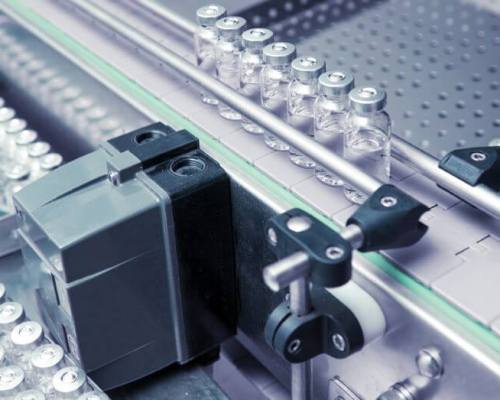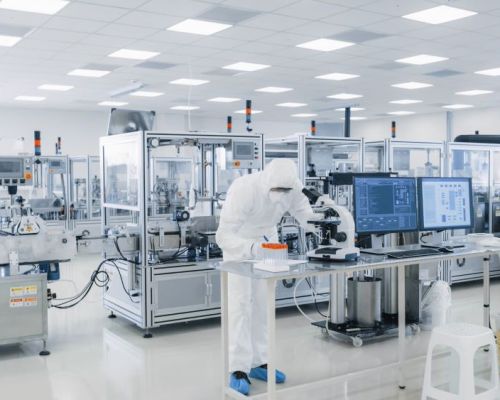Future-Proofing Your Manufacturing Plant
Part 2: How to Optimize your Plant Through Energy Resiliency
Just to recap, in the first blog in this series, we discussed ways to optimize your plant by auditing it for efficiency opportunities. In this second installment, we’ll walk through some questions to ask yourself as you build a resiliency strategy.
What is energy resiliency and why is it important?
It’s simple. Energy resiliency is making your energy supply and infrastructure more durable and dependable in the face of extreme weather and market disruptions. Looking at the last five years, it’s clear extreme weather events are becoming more and more common and causing more and more damage. And the weather isn’t the only thing triggering more unplanned outages.
Popular Science summed it up well, saying, “the oldest American power lines date back to the 1880s, and most of today’s grid was built in the 1950s and 1960s with a 50-year life expectancy.” The Texas 2021 Polar Vortex exposed how fragile the existing electrical infrastructure has become as more load has been placed on an aging system. According to the National Oceanic and Atmospheric Association, damages from the blackouts were estimated in the billions, making them the costliest disaster in Texas history. The cost of unplanned downtime is individual to each plant, but it always feels like the enemy of profit.
Local government and utilities are working to address the problem. But keep in mind, their priorities are people’s lives. Nationwide infrastructure buildout will take time and a lot of funding. In the meantime, organizations are working to bolster their ability to do business during bad weather through energy resiliency.
Ask yourself these questions to help create and execute your resiliency strategy
Current State and Cost of Outages
-
- What would happen if my company doesn’t meet its resiliency goals? This could be capital or a percentage of growth lost.
-
- What happens to my company if manufacturing and distribution centers experience a long-lasting blackout? What procedures are in place to re-start the business, and how fast does that take?
-
- During the last local extreme weather event, how fast did my business recover? What would happen if such an event occurs again?
-
- How much money does my business lose because of lost production and/or being out of stock? Did being out of stock affect customer relationships? Did you lose long-term customers because the last outage backed up their supply chain?
Goals and Funding
-
- What are my company’s resiliency goals? It’s vital to know what your company considers a win. Is it a specific percentage of uptime? It’s important to know what you’re trying to achieve, as well as intermediate benchmarks along the way so you can show progress.
-
- How do I fund resiliency projects? It’s important to know upfront how much funding you have for projects. Once you know the true costs of your outages, you can estimate your return on investment for resiliency. Your organization is investing in long-term business continuity. See if there are grants or tax rebates. And keep in mind providers like Duke Energy Sustainable Solutions also have financing models that can turn capital-heavy investments into predictable operating expenses over time.
Engineering and Infrastructure
-
- What are my risks and points of failure? Every operation is unique, and the first step is to identify potential points of failure and then create a plan to mitigate potential risks. The more critical the operation, the more system redundancy is required. Keep in mind, sometimes a point of failure is the fact that an existing backup generator only gets tested and turned on once a year, so when there is an actual outage, the generator doesn’t work. Or it could be that your old generator has to be switched on and no one was there on-site during the outage to do it last time.
-
- What data do I need to look for failure points? As you build your strategy and lay out different projects, you’ll need data and design engineering for the more complicated projects. Collect energy load profiles, large equipment data, and service records to find failure points. If you’ve already conducted an efficiency audit from Part 1 of this series, this information will be in the data you’ve already compiled. Check with your vendors and energy suppliers. Reach out to consultants like Duke Energy Sustainable Solutions to get help finding the weakest link in your infrastructure.
-
- What kind of backup power source is best for us? There are three types of generators – standby, continuous duty, and prime. Standby generators are used for emergencies and are kept ready for operation at a moment’s notice. Continuous duty generators are used where full-time operation of a constant energy output is needed. Prime power is exactly that, the primary power source of power for an electric load, which may fluctuate. If you already have a backup generator, is it old? Is it working at top efficiency so you can depend on it during an outage? Does it cover all your critical load? You may need to upgrade. Generators can also be combined with energy storage and on-site renewable energy to boost your resilience and sustainability at the same time.
-
- How sensitive are my systems to power disruption? Uninterrupted power supply (UPS), battery backup, and battery energy storage systems (BESS) can all be a part of the conversation. Even the most cutting-edge generators take a few moments before they begin providing the necessary power during an outage. A UPS is a battery that provides critical power as soon as an outage occurs and bridges the gap until your generator can go online. And keep in mind that generators equipped with a flywheel can provide the same function as a UPS where absolute power supply is critical. A BESS stores energy in a battery to cover peak load and can provide power stability when intermittent renewable electricity generation creates new demands on the grid.
-
- Do we have on-site renewable energy assets? Renewable energy can be a part of your resiliency strategy. On-site solar coupled with battery storage can provide an additional asset for a resilient power generation strategy. And there may be an opportunity for revenue if you sell power back to the grid.
-
- Does our operation generate waste heat on-site or need heat for processes? Combined heat and power (CHP) is a great way to add energy resiliency where the operation can use waste heat or generate new heat to produce steam for power generation, environmental heating and cooling (through absorbers), and more.
-
- Does my operation require system redundancy? Some systems can be made more resilient by adding redundant equipment in a primary/secondary configuration. Redundancy opportunities include generators, refrigeration, compressors, pumps, boilers, and chillers. If any single item breaks down, the overall system can still operate. Centralizing these systems in a central utility plant (CUP) may help to simplify equipment configurations and control.
-
- Do I need to combine multiple energy systems for a comprehensive solution? Microgrid controls can help by automating energy delivery systems. Human error can be an issue and should be factored into resiliency planning. Microgrid controls can be programmed to divert output from on-site power assets, activate backup power equipment (batteries, gen-set) and even supply power to the grid during favorable market conditions.
-
- Are my emergency, prime operation, and non-essential power circuits separated in the distribution design? Electrical infrastructure should be assessed by a qualified electrical engineer that also specializes in safety analysis and system design. An electrical infrastructure assessment should sort out what systems are critical to operation.
Once you have completed your resiliency plan, work your strategy from beginning to end through a set timeline. Plans that span years can lose their credibility as operational needs will change over time. Treat the plan as a living document that will accommodate future changes.
Ready to get started on your resiliency journey? Contact us.



